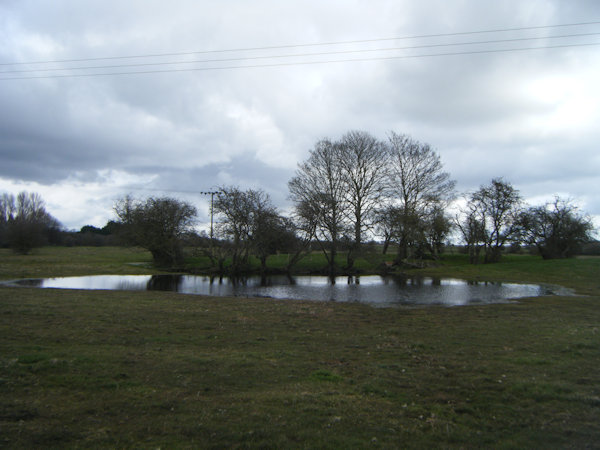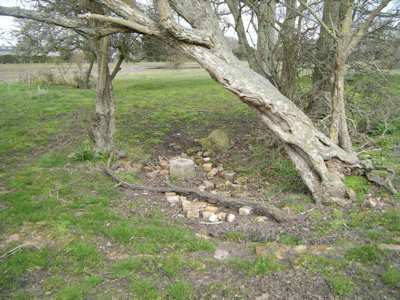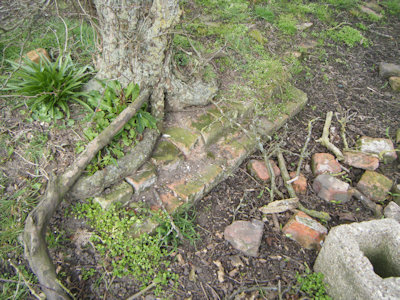 |
Dedication: Saint John of Beverley Location: Swinemoor Coordinates: 53.85639N, -0.40386W Grid reference: TA050411 Heritage designation: none |
HOME - ENGLAND - EAST RIDING
 |
Dedication: Saint John of Beverley Location: Swinemoor Coordinates: 53.85639N, -0.40386W Grid reference: TA050411 Heritage designation: none |
St John of Beverley was active in both Yorkshire and Northumberland during the late 7th and early 8th centuries. St John was, by all accounts, born in nearby Harpham (which boasts yet another of his holy wells), and he was likely an acquaintance of St Hilda, as he spent some time as a monk at Hilda's monastery in Whitby, at some point before Hilda's death. Perhaps because of his connections to other well-known holy figures of the time (such as John's friend, the Venerable Bede), John was appointed the Bishop of Hexham by Archbishop Theodore of Canterbury in 687, and it was not long before he became the Bishop of York. John seems to have been a rather charismatic preacher, as he already had a large following before his death in Beverley (where his relics were later stored) in 721, after which his cult (which benefitted the town of Beverley) prospered, along with the spread of his fame. Among his avid supporters were St Julian of Norwich, a famous anchoress of the 14th century; Edward I, who used John's banner in military campaigns; and St John Fisher, a 16th century martyr who was born in Beverley. It is in no way surprising that St John of Beverley became the patron saint of several holy wells in the area.
"Swinemoor Well", as it appears, historically, to have been most commonly referred to, seems to have been renowned for its healing powers since at least the 17th century, although this tradition almost certainly predates that time and was probably part of St John's medieval cult. The earliest reference that I have been able to find to the well is a very short mention of the site that can be found in the minutes of the Beverley Corporation, dating to 1684 (more on that later). The most famed reference, however (if "famed" is indeed the correct word for it) is one that was made in 1695 by Edmund Gibson, who was, during his lifetime, both the Bishop of Lincoln and of London, in his translation of William Camden's Britannia. Britannia was originally written in Latin, and, in his version, Gibson included some extra information of his own, which included a mention of Swinemoor "Spaw":
|
About a mile from Beverley to the eaſt, in a paſture belonging to the town, is a kind of Spaw; tho' they ſay it cannot be judg'd by the taſte whether or no it comes from any Mineral. Yet taken inwardly, it is a great dryer; and waſh'd in, dries ſcorbutick ſcurf, and all ſorts of ſcabs; and alſo, very much helps the King's Evil. |
The "spaw" was also mentioned by Francis Brokesby in a letter entitled An Account of ſome Obſervations relating to the Antiquities and Natural Hiſtory of England that formed the preface to Thomas Hearne's 1710 version of Leland's Itinerary:
|
I cannot but take notice of a Spring near Beverley in the Eaſt-Riding of Yorkſhire concerning which I receiv'd this Account from a Worthy Phyſician of that Place, that ſome remarkable Cures had been wrought by it, (which are mention'd in the Additions to the Britannia) as the drying [of] Scorbutic Scurf, and helping in the King's Evil; But he could not find that it was impregnated with any Mineral by the ſeveral Methods which he us'd to that Purpoſe. |
It was John Warburton, in the mid 18th century, who was first to mention the dedication of the well to St John of Beverley. I have not been able to access Warburton's notes, so the only records that I have of Warburton's remarks date from the 19th century. John Green, in 1869, writing in Green's Complete Hand-Book to Beverley, states that "Warburton says, that it is impregnated with steel; and to increase its virtues was dedicated to Saint John of Beverley". This is one of a very small minority of sources that actually reference the well's association with St John; possibly the lack of interest or knowledge regarding the local saint's patronage of the site was a direct result of the Reformation.
Although Swinemoor Well never appears to have been exceptionally popular, it was evidently a profitable venture. It seems that what was, following the Reformation, little more than a spring on Swinemoor was revitalised in 1684 by the Beverley Corporation, a small elected governing body of the town that was headed by the mayor. "Swinemoor Well" was never mentioned in the Corporation's minutes until 1684, despite the fact that Swinemoor was mentioned multiple times. Therefore, it is almost certain that the transformation of Swinemoor's forgotten holy well into a "spaw" occurred in 1684 as a commercial venture on behalf of the Corporation, and that it is from this point onwards that the well came back into repute. The minutes of a meeting of the Corporation on the 30th of June, 1684, read thus:
|
The Surveyors and the Pasture Masters of Swinemoor to view Swinemoor Well and prepare it for a drinking or bathing "Spaw." |
Interestingly, the Corporation actually had a lot to do with the development of Beverley's new minor spa. When the well was "dressed and walled about" in July, 1703, it was agreed that the cost of the work would be "collected as far as possible", but that the balance was to be "paid by the Corporation". Whenever the site was in need of repair, the Corporation would discuss this in their regular meetings, an example of this being in the May of 1737, when the minutes from a meeting that had taken place on the second day of that month stated "Swinemoor Well to be repaired". Swinemoor Spa must have been doing well, as, in June 1741, the Corporation decided that a brick wall would be built around the site, along with two "little houses", "for the convenience of persons bathing there", which presumably were a pair of changing rooms.
These two "little houses" did not last long, however; in 1745, Swinemoor Spa was let by the Corporation to a man named John Hornby "for 21 years at a rent of 40/-p.a." (which is roughly £300 in today's money), who evidently had plans for the spa. According to the minutes of a meeting that was held by the Corporation on the 4th of March, 1745, Hornby was given permission to build on the site "as he shall think most commodious for the reception of persons frequenting" the spa, and it was planned that he would be exempt from paying rent on both the first year of the lease and the year in which he built on the site. There was also one condition that came with this new agreement: "all freemen and their families and others having settlements in the town [were] to have the liberty of bathing in the said waters or drinking the same at their pleasure without paying anything for the same". It was in 1747 that Hornby had a new "house" built on the site, by a man named John Ellinor; from all accounts, this construction survived until 1955, albeit in a derelict state for much of the 20th century. The Corporation appear to have paid for Ellinor's work.
In early 1748, Swinemoor Spa was re-let by the Corporation to a Mr James Burgess, for three years for exactly the same amount per year as Hornby was charged. It is not clear why Hornby's twenty-one year contract did not hold out for even a seventh of what it should have. According to the terms of the lease, as outlined above, Hornby never actually had to pay any rent, maintenance costs, or even the bill for the construction of the new "house", but he almost certainly did make a reasonable profit, without spending a penny himself. It is probable that Hornby exploited the bargain, and deliberately cancelled the lease just before he would have had to begin paying rent in 1748.
Throughout the 18th century, the site remained popular, and the Corporation appear to have invested in the site further. In 1772, it was recorded that a man named Thomas Wilson, who cleaned the spa regularly, was paid 50 shillings, which is worth £300 (in today's money) for a year's work.
During the 19th century, the spa's popularity began to peter out, and it lost its reputation for possessing healing powers. The site was mentioned in 1818 in a short description of Beverley that appeared in the Commercial Directory, for 1818-9-20, in which its efficacy in curing "sores, ulcers, &.c" was praised, but this seems to have been the last time that the supposed health benefits of the spring were advertised. By 1828, according to Thomas Allen, writing in the same year in A New and Complete History of the County of York, it had "no celebrity for any such virtues", and was "used only as a bath" on account of its "extreme coldness". The very same sentiment was echoed time and time again during the 19th century, until the spa had completely fallen out of use by the 20th century. By 1949, the only water source on Swinemoor that was ever used for bathing was the Barmston Drain (which is unrelated to the well), which, according to a Beverley Borough Council report of 1949, was used only by children, but was found to be "heavily polluted with faecal coli", and was thus "unsuitable for bathing". In 1955, Hornby's buildings were demolished, and the site was reduced to what it is today. The well, however, has survived.
When I visited the site in the March of 2025, the brick foundations of some of the spa's buildings were visible, most notably the outline of what seems to have been the bath; these foundations matched exactly with the site as it appeared on old Ordnance Survey maps. Another survivor from the old spa complex is a ditch that surrounds the site's northern edge, which once acted as drainage for the bath. The spring itself was still actively producing a large quantity of water, which now has formed an immense pool on the western edge of the site.
 |
 |
|
Access: The well is located in a large area of common land that can be accessed from multiple entrances. The site of the spa itself is probably best approached from the south. |
Copyright 2025 britishholywells.co.uk